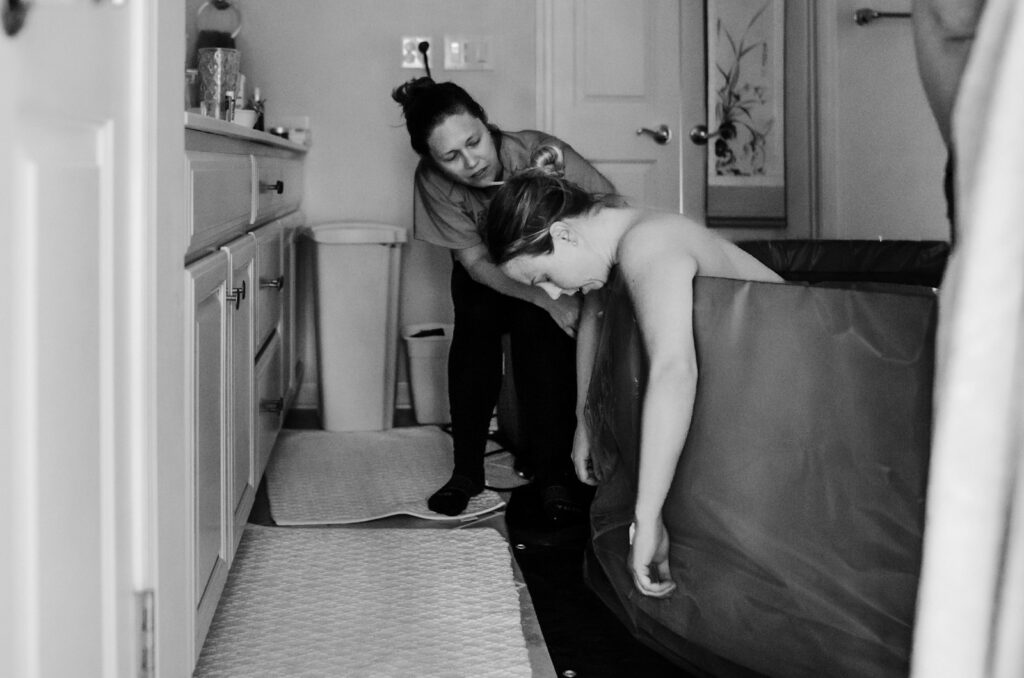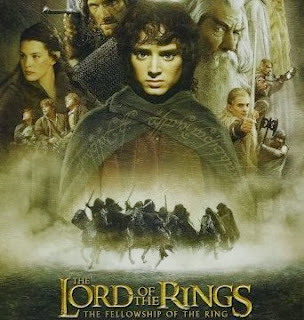
Hattie McDaniel’s name is etched into the annals of Hollywood history, not merely as an actress, but as a trailblazer whose life story encapsulates the triumphs and profound injustices faced by African Americans in 20th century entertainment. Born to formerly enslaved parents, her journey from childhood poverty to cinematic pinnacle, becoming the first African American to win an Academy Award, is a testament to her talent, resilience, and unwavering spirit. Yet, her path was fraught with complexities, marked by the constant negotiation of identity, aspiration, and entrenched racial barriers.
Beyond the iconic golden statue, McDaniel’s narrative unfolds as a powerful exploration of perseverance in the face of systemic bigotry, the difficult choices made for survival and progress, and a lifelong commitment to her craft and community. Her career, spanning hundreds of films, radio programs, and vaudeville stages, laid crucial groundwork, even as it was met with both fervent applause and sharp criticism. Understanding Hattie McDaniel requires delving into the nuanced realities of her time, appreciating the profound significance of her achievements, and confronting the painful truths of limitations she navigated.
This in-depth examination will journey through the defining moments of Hattie McDaniel’s extraordinary life, from humble beginnings and early forays into entertainment, through her groundbreaking Oscar win for “Gone with the Wind,” and the complex legacy she bequeathed to future generations. We will explore the factual tapestry of her experiences, shedding light on forces that shaped her remarkable journey and the indelible mark she left on American culture and the ongoing struggle for civil rights.

1. **Early Life and Roots**Hattie McDaniel’s story begins not on a glittering Hollywood set, but in Wichita, Kansas, in 1893, where she was born the youngest of thirteen children to parents who had endured the brutal institution of slavery. Her father, Henry McDaniel, a Civil War veteran, had served with the 122nd United States Colored Troops, embodying resilience that would echo in his daughter’s life. Her mother, Susan Holbert, contributed to the family’s musical heritage as a gospel singer, nurturing Hattie’s inherent love for performance.
The family’s pursuit of a better life led them to Colorado in 1901, first to Fort Collins and then to Denver, seeking refuge from increasing segregation and threats. Despite growing up in poverty, Hattie’s natural talent for singing and performing began to shine early. She attended the 24th Street Elementary School, where, as one of only two Black students, her flair for performance was evident. She once humorously recalled, “I knew that I could sing and dance. I was doing it so much that my mother would give me a nickel to sometimes stop.”
This early exposure to music and performance, coupled with the formidable strength inherited from her formerly enslaved parents, laid the foundation for McDaniel’s future endeavors. Her family was steeped in show business; her father preached and sang, and several brothers also entered entertainment. This environment fostered her burgeoning talent, setting her on a path that would eventually lead her far from childhood struggles, yet always connected to her lineage.
Read more about: Beyond the Pitch: David Beckham’s Coveted 1o-Car Collection — A Masterclass in Automotive Luxury and Style

2. **Forging a Path in Entertainment**McDaniel’s professional career as an entertainer began in earnest with minstrel shows, a complex and often problematic form of entertainment that nonetheless provided a vital, albeit limited, avenue for Black performers. By 1909, at just 15, she had dropped out of school to dedicate herself fully to her passion, joining her brother Otis’s carnival company. This early experience in touring troupes allowed her to hone her skills as a singer, comedian, and actress, laying groundwork for a versatile career.
Her entrepreneurial spirit was evident when, in 1914, she and her sister Etta Goff formed their own all-women minstrel show, the McDaniel Sisters Company. This venture showcased her determination and leadership, marking a significant step in her burgeoning career. Following the death of her brother Otis in 1916, Hattie and Etta continued to perform, drawing full capacity crowds as The McDaniel Sisters and Their Merry Minstrel Maids, demonstrating their enduring appeal and talent.
By the 1920s, McDaniel had expanded her repertoire, appearing with Professor George Morrison’s Melody Hounds, a Black touring ensemble, and making a notable foray into radio. She sang with the Melody Hounds on Denver’s KOA radio station, becoming the first Black woman to sing on radio in the United States. She also recorded numerous songs for Okeh Records and Paramount Records between 1926 and 1929, showcasing her vocal prowess and establishing herself as a multifaceted entertainer long before Hollywood beckoned.
Read more about: Olivia Hussey: A Life Defined by Star-Crossed Romance, Acclaim, and Lingering Controversy (1951-2024)

3. **Arrival in Hollywood: Struggles and the Defining Choice**The Great Depression brought economic hardship that tested McDaniel’s resilience. Following the stock market crash in 1929, she found herself working as a washroom attendant at Sam Pick’s Club Madrid near Milwaukee, a stark contrast to her burgeoning radio and recording career. The club owner initially doubted her talent, insisting she could not sing. However, McDaniel, ever the performer, eventually seized an opportunity to take the stage, quickly becoming a regular and proving her undeniable abilities.
In 1931, driven by the lure of the burgeoning film industry and the presence of her siblings, Sam, Etta, and Orlena, Hattie made the pivotal move to Los Angeles. Hollywood’s promise, however, did not immediately translate into success. When film work was scarce, she was forced to take jobs as a maid and laundress, experiences that would profoundly influence her perspective on the roles she later embraced on screen.
It was during this period that she began appearing on her brother Sam’s KNX radio program, “The Optimistic Do-Nut Hour,” where she developed the popular character of “Hi-Hat Hattie,” a bossy maid who often “forgets her place.” This radio persona, while popular, mirrored the limited roles available to Black actresses. Her low radio salary meant she continued working as a maid to make ends meet, setting the stage for her famously defiant declaration: “I’d rather play a maid than be one.” This statement encapsulated her pragmatic approach to navigating a discriminatory industry, choosing employment over protest.

4. **Rise to Prominence: Securing On-Screen Credit and Making Connections**McDaniel’s entry into film began with uncredited roles, a common experience for Black actors of her time. Her first screen appearance was in “The Golden West” (1932), playing a house servant. A more significant part came in Mae West’s highly successful film “I’m No Angel” (1933). The sheer volume of her work is staggering; she appeared in more than 300 films, yet received screen and print credit for only 83, a testament to the pervasive disregard for Black contributions in early Hollywood.
By 1934, McDaniel’s talent was undeniable, leading her to join the Screen Actors Guild and sign her first studio contract with Fox Film Corporation. This marked a turning point, as she began to attract attention and land larger roles that finally earned her screen credits. She appeared in notable films such as “The Little Colonel” (1935) alongside Shirley Temple and Bill “Bojangles” Robinson, and “Alice Adams” (1935), where her performance as a slovenly maid was hailed as “hilarious and highly comedic” by author Alvin Marill, who noted she “stole” scenes.
Her ability to forge genuine connections within Hollywood also played a crucial role in her rise. She befriended many of the era’s biggest stars, including Joan Crawford, Clark Gable, and Olivia de Havilland. This network proved invaluable, particularly when Bing Crosby, after working with her on “Show Boat” (1936) where she sang “Can’t Help Lovin’ Dat Man,” recommended her to producer David O. Selznick for the role that would change her life: Mammy in “Gone with the Wind.” Her talent, coupled with her growing friendships and pragmatic approach to industry limitations, propelled her toward cinematic immortality.

5. **The Iconic Role of Mammy: Casting in “Gone with the Wind”**The search for an actress to portray Mammy in the highly anticipated adaptation of Margaret Mitchell’s “Gone with the Wind” was almost as intense as the hunt for Scarlett O’Hara herself. The role was coveted, even attracting the attention of First Lady Eleanor Roosevelt, who reportedly wrote to producer David O. Selznick to suggest her own maid, Elizabeth McDuffie, for the part. This illustrates the national spotlight already on the film and its crucial supporting characters.
Hattie McDaniel, despite her growing reputation as a comic actress, initially did not expect to be chosen. However, her talent had not gone unnoticed. Sources suggest that Clark Gable, having worked with her previously in films like “China Seas” and recognized her acting prowess, recommended McDaniel for the role. This endorsement from a leading man undoubtedly carried significant weight with Selznick, who was under immense pressure to find the perfect cast.
Ultimately, McDaniel’s powerful audition cemented her place in cinematic history. She arrived dressed in an authentic maid’s uniform, embodying the character with a depth and authenticity that captivated the producers. Her casting as Mammy in “Gone with the Wind” in 1937, a role she would bring to life with such indelible force, not only transformed her career but also set the stage for a groundbreaking, yet deeply complex, chapter in American film and civil rights history.

6. **”Gone with the Wind” Premiere and the Stark Reality of Segregation**The grandeur surrounding the premiere of “Gone with the Wind” was immense, yet it was starkly contrasted by the pervasive racial segregation that Hattie McDaniel and her Black co-stars faced. The film’s highly anticipated debut was scheduled for Friday, December 15, 1939, at Loew’s Grand Theater on Peachtree Street in Atlanta, Georgia. This city, deeply entrenched in Jim Crow laws, explicitly forbade Black people from attending events with white audiences in such venues.
Studio head David O. Selznick recognized the significance of her presence and requested that McDaniel be permitted to attend the Atlanta premiere. However, MGM, the distributing studio, advised against it. Clark Gable, a close friend and colleague, demonstrated his solidarity by threatening to boycott in protest. Yet, in a gesture of pragmatic strength, McDaniel herself convinced him to attend, understanding the larger implications for the film and her own career trajectory.
Though she was ultimately barred from the Atlanta opening, Selznick insisted her picture be featured prominently in the program for the film’s Hollywood debut on December 28, 1939, a small but significant acknowledgment of her contribution. This forced exclusion was a painful reminder of the racial barriers that permeated American society, foreshadowing the challenges she would face even at the Academy Awards and underscoring the relentless nature of racial prejudice in the era.

7. **Hattie McDaniel’s Historic Academy Award Win**On February 29, 1940, Hattie McDaniel etched her name into cinematic history, becoming the first African American to win an Academy Award. The 12th Academy Awards ceremony took place at the Cocoanut Grove nightclub within The Ambassador Hotel in Los Angeles, a venue then subject to strict segregation policies. This meant that McDaniel’s attendance was not guaranteed, despite her monumental achievement.
Studio head David O. Selznick had to exert considerable influence to ensure McDaniel was permitted inside the hotel. However, even with this intervention, the pervasive racial prejudice of the era dictated her seating arrangement. She was made to sit at a separate, faraway table with her date and white manager, physically removed from her white co-stars, Clark Gable and Vivien Leigh.
Despite these overt acts of discrimination, McDaniel’s moment was undeniably her own. When her name was called for Best Supporting Actress, she walked to the stage amidst a standing ovation, delivering an emotional and profoundly humble speech. She received a plaque-style Oscar, measuring approximately 5.5 by 6 inches, which was the standard award for supporting actors and actresses at that time.
American gossip columnist Louella Parsons vividly recounted the scene, noting McDaniel’s grace and dignity. Parsons described her as having “hair trimmed with gardenias, face alight, and dress up to the queen’s taste,” as she accepted the honor. McDaniel’s words on that historic night were clear: “I sincerely hope I shall always be a credit to my race and to the motion picture industry.” This declaration resonated, articulating her profound sense of responsibility and aspiration.

8. **The Complex Criticisms of Her Roles**Hattie McDaniel’s groundbreaking success was, however, met with a complex array of reactions, particularly within the Black community. While many celebrated her personal victory as an individual achievement, it was often seen as bittersweet, shadowed by the persistent issue of racial stereotypes in Hollywood. The film “Gone with the Wind” itself drew criticism for its portrayal of enslaved people and for seemingly romanticizing the antebellum South.
Her portrayal of Mammy, though praised by white critics, alarmed some, particularly in the South, who found her character to be too “familiar” with her white owners. Critics within the Black community, including leaders of the National Association for the Advancement of Colored People (NAACP), vehemently opposed the film. They pointed out racist language and stereotypes in both the novel and the screenplay, pressuring Hollywood for changes.
Some writers observed that McDaniel’s Mammy did not significantly deviate from Margaret Mitchell’s novel. Both the film and book failed to hint at Mammy’s personal life, her own children, or desires beyond serving at Tara. This perpetuation of a one-dimensional servant archetype fueled the concerns of those actively fighting for Black civil rights.
The head of the NAACP, Walter White, specifically implored African-American actors to reject stereotypical roles, such as maids and servants, which he believed degraded their community. He advocated for roles that showcased people of color in more capable and diverse capacities. For many, McDaniel’s unique success seemed to imply that only by not protesting Hollywood’s systemic use of racial stereotypes could Black actors find work and achieve recognition.
Read more about: Beyond the Buzz: Unpacking the Real Reasons Martin Lawrence’s Presence Sparked Recent Concerns and Whispers

9. **Her Powerful Defense of Her Choices**Despite the intense scrutiny and criticism, Hattie McDaniel steadfastly defended her professional choices, articulating a pragmatic and forward-thinking perspective on her career. Her well-known declaration, “I’d rather play a maid than be one,” captured her approach to navigating a discriminatory industry, choosing employment and influence over a principled, yet potentially career-ending, stance.
In a 1947 article for the Hollywood Reporter, McDaniel eloquently addressed her detractors. She wrote, “I have never apologized for the roles I play,” asserting her belief that critics often underestimated the public’s intelligence. She argued, “I believe my critics think the public more naïve than it actually is,” suggesting audiences could differentiate between an actor and their character.
She illustrated this point by referencing actor Arthur Treacher, who was “indelibly stamped as a Hollywood butler.” McDaniel noted, “I am sure no one would go to his home and expect him to meet them at the door with a napkin across his arm.” This analogy underscored her conviction that playing a role, however stereotypical, did not define her or the broader Black community.
Furthermore, McDaniel actively sought to effect change from within the system. She recounted instances where she persuaded directors to “omit dialect from modern pictures,” to which they “readily agreed.” Her famous radio speech on July 7, 1940, offered a profound insight into her motivations, stating, “I want you to know that I feel no great personal pride for my contribution to the world of art. Rather, I feel that the entire fourteen million or more Negroes have all been raised a few notches higher in the estimation of the world.”
McDaniel viewed herself as glorifying a specific type of Negro womanhood of her era—”the brave, efficient, hard-working type of womanhood has built a race.” She saw her role as an opportunity to portray strength and resilience, akin to figures like Harriet Tubman and Sojourner Truth. These actions, she believed, were steps toward opening doors for future African Americans in entertainment, allowing them to “go farther in the growing entertainment world.”
Read more about: Olivia Hussey: A Life Defined by Star-Crossed Romance, Acclaim, and Lingering Controversy (1951-2024)

10. **Post-Oscar Career Successes and Challenges**Following her historic Oscar win, Hattie McDaniel continued to pursue her acting career with vigor throughout the 1940s. She appeared in numerous films, lending her distinct talent to various productions. Beyond the silver screen, McDaniel actively supported the war effort, performing with the USO during World War II and undertaking tours to promote “Gone with the Wind” across the nation.
A significant milestone in her post-Oscar career was her groundbreaking venture into radio. McDaniel became the first Black actor or actress to star in her own American radio program, the comedy series titled “Beulah.” This immensely popular show earned her an impressive salary of $2,000 per week, a testament to her widespread appeal and undeniable talent. The show underscored her status as a leading entertainer of her time.
However, even this success was not without its complications. The “Beulah” show, while popular, also generated controversy for its continued reliance on racially stereotypical scenarios, mirroring the ongoing debate surrounding her film roles. This highlighted the persistent struggle for Black performers to break free from limited portrayals in the entertainment industry.
As the 1950s dawned, McDaniel’s health began to decline. In 1951, while filming the television adaptation of “Beulah,” she suffered a heart attack. This serious health event led to a subsequent diagnosis of breast cancer. Tragically, Hattie McDaniel passed away on October 26, 1952, at the age of 59, bringing to an end a career marked by both extraordinary triumphs and profound challenges.

11. **The Denial of Her Final Burial Request**Hattie McDaniel’s life was characterized by battling racism and segregation, a struggle that, in a cruel twist of fate, extended even to her death. In her will, McDaniel expressed a poignant final request: to be buried in the Hollywood Forever Cemetery, then known as Hollywood Memorial Park, alongside her fellow movie stars. This wish symbolized her deep connection to the industry and her desire for recognition among her peers.
However, this request was denied due to the pervasive racial segregation of the era. At the time of her death, Hollywood Memorial Park maintained a strict “whites only” policy, preventing her interment in the very ground where so many of her white colleagues rested. As a result, Hattie McDaniel was laid to rest at Angelus-Rosedale Cemetery in Los Angeles, away from the luminaries she had worked beside.
Adding to the indignities, her Oscar plaque, a symbol of her historic achievement, was reportedly deemed to have “no value” by an appraiser. It was subsequently given to Howard University, but later went missing from display in the 1970s, a sad loss of a significant piece of Black cinematic history.
Decades later, in a gesture to rectify this historical injustice, Tyler Cassity, who took ownership of Hollywood Forever in 1998, offered to relocate McDaniel’s remains to honor her original wish. However, her family ultimately decided to leave her where she was interred. Instead, Cassity erected a poignant 4-foot-tall, gray and pink granite memorial in October 1999, which stands in Hollywood Forever Cemetery, dedicated on the 47th anniversary of her death.
The memorial includes a heartfelt quote from her grand-nephew, Edgar Goff, affirming: “Aunt Hattie, you are a credit to your craft, your race, and to your family.” This beautiful tribute now allows visitors to reflect on her legacy within the iconic cemetery she wished to call her final resting place, even if her physical remains could not be moved.
Read more about: Tran Trong Duyet: Unpacking the Complex Legacy of John McCain’s Captor at the ‘Hanoi Hilton’ and His Journey Towards Reconciliation

12. **Her Enduring Legacy in Cinema and Civil Rights**Hattie McDaniel’s journey through Hollywood was a profound testament to resilience, talent, and an unwavering spirit in the face of systemic adversity. Her life, fraught with challenges of racism and segregation, saw her make difficult choices, some pushing boundaries and others accepting limitations, all within a system deeply entrenched in prejudice.
Her historic Academy Award win for “Gone with the Wind” was not merely a personal triumph but a watershed moment, securing her place as a groundbreaking figure in cinema. While this recognition of her skills should never overshadow the racial injustice she endured, it undeniably opened a door, however narrowly, for future African American performers.
McDaniel herself articulated a powerful vision for her achievements, seeing them not as solely personal, but as elevating her entire race. In her eloquent radio address, she stated, “I feel that the entire fourteen million or more Negroes have all been raised a few notches higher in the estimation of the world. Each one of us is an ambassador now, either for good or ill for our race.” She believed her success made her an ambassador, striving to add a “lasting credit to our race.”
She consistently expressed a desire to inspire younger generations. To aspiring individuals facing similar struggles, she offered a message of hope and perseverance: “To you young people who are aspiring to succeed in some line of endeavor, in spite of the troubles that many of us have experienced, let me say this: There is still room at the top.” This ethos encapsulated her belief in progress, achieved through persistent effort and working within the existing framework.
McDaniel’s legacy continues to be recognized and celebrated. She has been honored with two stars on the Hollywood Walk of Fame, inducted into the Black Filmmakers Hall of Fame in 1975, and posthumously became the first Black Oscar winner to be honored with a U.S. postage stamp in 2006. In 2010, she was inducted into the Colorado Women’s Hall of Fame, cementing her status as a cultural icon.
Her story has also found renewed resonance in contemporary media, notably through its inclusion in the Netflix series “Hollywood,” where actress Queen Latifah portrayed her character. Hattie McDaniel’s life remains a crucial narrative, illustrating the immense talent and indomitable will required to forge a path in a discriminatory world, leaving an indelible mark on both cinema and the ongoing quest for civil rights and equality.
Read more about: Turn Up the Volume: 12 Iconic Musicians Who Redefined Singing with Their Unforgettable Voices
Hattie McDaniel’s narrative transcends mere cinematic achievement; it stands as a vital chapter in American history, illuminating the profound complexities of race, representation, and artistic integrity in the early 20th century. Her journey, from the minstrel stage to Hollywood’s pinnacle, reminds us of individual perseverance against overwhelming societal barriers. While debates regarding her choices persist, her unwavering dedication to her craft and sincere hope for her race’s advancement undeniably paved the way for those who followed, reshaping American entertainment and the broader conversation about justice.



